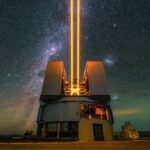Image by Kohji Asakawa from Pixabay
🌌 A Universe Once Thought Empty
For centuries, the night sky appeared as a vast expanse dotted with stars, each seemingly solitary in the cosmos. The idea of planets orbiting these distant suns was speculative at best. However, the advent of advanced telescopes and the study of cosmic light have revolutionized our perspective, revealing that our galaxy is brimming with hidden worlds.
🔭 The Kepler Telescope’s Groundbreaking Discoveries
NASA’s Kepler Space Telescope, launched in 2009, marked a turning point in the search for exoplanets. By monitoring the brightness of over 150,000 stars, Kepler detected minute dips in light caused by planets transiting their host stars. This method led to the confirmation of thousands of exoplanets, many of which are Earth-sized and reside in their star’s habitable zone.
🌍 A Diverse Array of Alien Worlds
The exoplanets discovered exhibit a remarkable diversity. Some are rocky like Earth, while others are gas giants akin to Jupiter. There are even “super-Earths”—planets larger than Earth but smaller than Neptune—that challenge our understanding of planetary formation. These findings suggest that our solar system is just one of countless planetary systems in the galaxy. Dailyscitech
🔬 Light as a Tool for Discovery
The study of cosmic light, or spectroscopy, allows scientists to analyze the composition of exoplanet atmospheres. By examining the light filtered through a planet’s atmosphere during transit, researchers can identify the presence of gases like water vapor, methane, and carbon dioxide—potential indicators of habitability. This technique has been instrumental in assessing the potential for life on distant worlds. Dailyscitech
🚀 The Future of Exoplanet Exploration
With missions like the James Webb Space Telescope and the upcoming Habitable Worlds Observatory, the search for Earth-like planets continues to advance. These instruments will provide unprecedented sensitivity and resolution, enabling the detection of smaller, Earth-sized exoplanets and the detailed study of their atmospheres. The quest to find another Earth is no longer a distant dream but an ongoing scientific endeavor. Dailyscitech
🌠 What Lies Beyond?
As we uncover more about these hidden worlds, questions abound: Could life exist on these distant planets? What can they teach us about our own planet’s formation and future? The universe is vast and full of mysteries waiting to be explored.
Curious to learn more about the latest discoveries in exoplanet research?
Stay tuned to DailySciTech for updates on the search for alien Earths and the ongoing exploration of our cosmic neighborhood.










